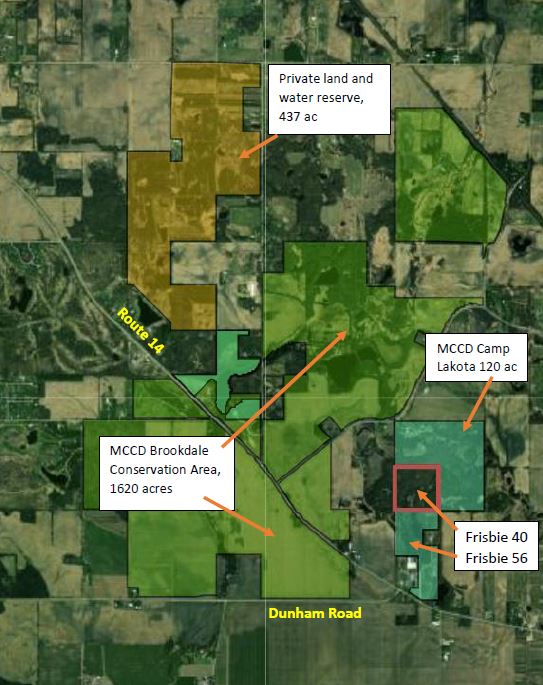
Forty Acres of a Former Boy Scout Camp Preserved for Life in Woodstock
In 1993, Hugh and Marlene Frisbie purchased farmland outside of Woodstock where they built their home, raised their children, opened a plant nursery and began restoring the farm fields to native prairie, wetland and woodland habitat.
The more restoration they completed, the deeper their interest in conservation grew. Restoring the land wasn’t enough – they were moved to help nurture the local conservation community as well. Marlene joined the board of the Environmental Defenders of McHenry County. Hugh joined the board of the Conservation District’s Foundation, where he served for several years, including a term as president.
More recently Marlene completed three terms on TLC’s board, and Hugh retired from the board at Openlands in Chicago after a decade of service.
The Frisbies’ conservation ethic extends beyond the land to include energy conservation as well. Their home is heated and cooled with a geothermal system, solar panels provide electricity, and they drive electric vehicles.
In 2011, they preserved 56 acres of their 61-acre property with a permanent conservation easement they donated to TLC.
In 2021, they acquired an adjacent 40 acres which was part of the Lakota Boy Scout Camp, and quickly got to work clearing buckthorn and honeysuckle from the woods. In 2023, they placed a permanent conservation easement on those 40 acres, ensuring they will be preserved as wetland and oak woodland – that makes 96 acres preserved forever.


Marlene says, “We had been familiar with the property, as we had hiked and skied it (with permission) when the Boy Scouts owned it. We had some concern about the future of the property once it was sold, so we got together a group of conservation-minded organizations to help ensure that the entire property could be preserved.”
She adds, “What made us want to have a piece of it was how different this land was from the property we already owned, which is immediately adjacent. The camp property is gently rolling and heavily wooded, and most of the woods are old-growth oak and hickory.”

Marlene jokes, “And now we have an outhouse!”
The property includes oak groves dominated by white oaks, with occasional red oaks, shagbark hickory and a stand of chestnuts. Wetlands throughout the property include vernal pools that offer seasonal homes for amphibians and reptiles. Also, the state-endangered Blanding’s Turtle has been spotted in areas of the newly preserved land, as well as three different state-threatened or endangered bird species that visit the property’s oaks and wetlands.
Their conservation land is located in an area of the county rich in natural resources and lands protected by public and private landowners, totaling 2,310 acres, which can be seen on the map on this page.
Stay tuned – we are looking forward to having more chapters of Hugh and Marlene’s land conservation journey to tell!
